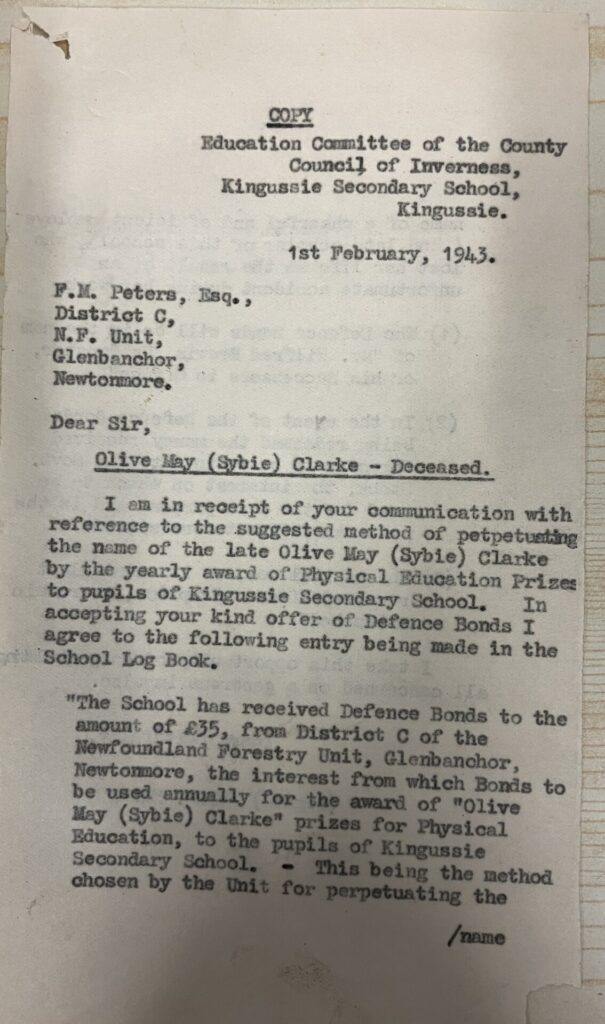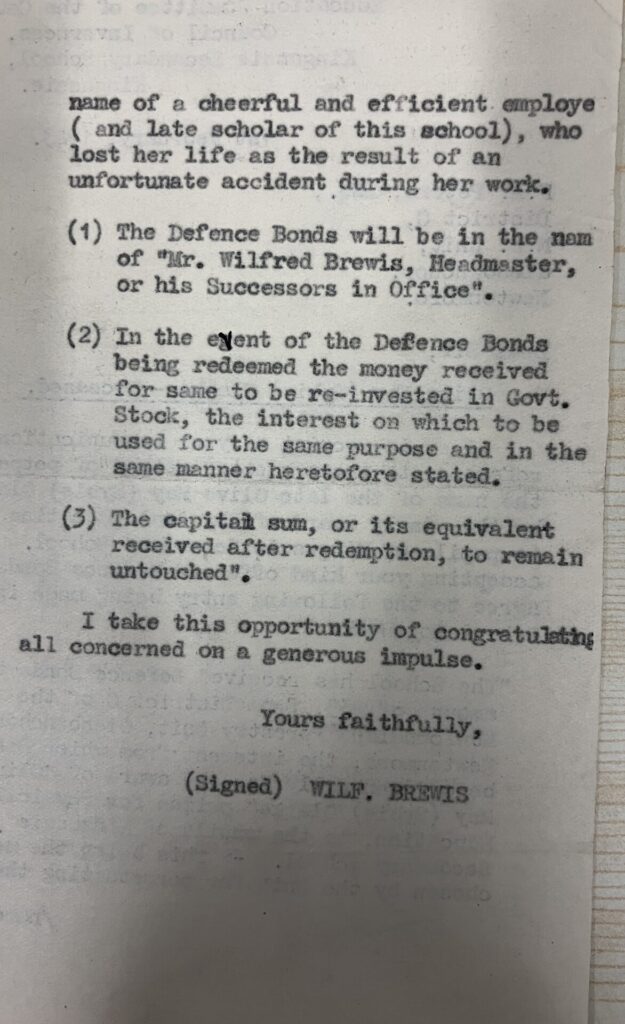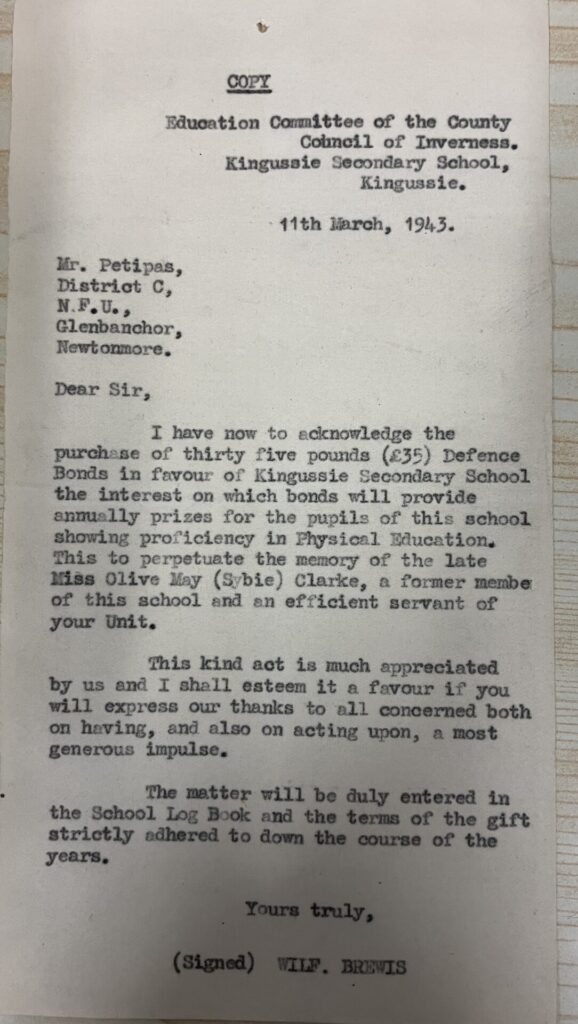| Surname: | Clarke |
| Forename(s): | Frederick Herbert |
| Rank: | Constable |
| Service number: | |
| Regiment: | Police War Reserve |
| Date of death: | 21 March 1941 Aged 32 |
| Place of death: | Western Infirmary, Glasgow |
|
Commemorated |
Kingussie War Memorial |
Background
Frederick was born in the Parish of St Margaret’s, Kings Lynn, Norfolk on 11 August 1907. His parents were Herbert William Clarke and Edith m.s. Mitchley who were married 7 April 1906 in Kings Lynn, Norfolk. Frederick had an older sister Agnes born 18 June 1906 and a younger brother Charles 30 December 1909 both born in Kings Lynn and younger siblings born in Kingussie Wallace William 2 April 1916 and Olive born 1921.
In the 1921 Census he is living with the family at 1 Cameron Terrace, Kingussie where his father’s occupation is saddler. Frederick’s mother died on 4 January 1927 and his father died in 1953 and both are buried in Kingussie Cemetery.
Frederick married Catherine Kennedy (m.s. McNaughton) at the Manse in Kingussie on 21 April 1932. He was described as an assistant Greenkeeper living at Cameron Terrace, Kingussie. Catherine was living at Gowanlea, Kingussie. Catherine died in 1976 and her death was registered in Inverness.
Frederick’s wife Catherine was still living at Cameron Terrace at the time of his death. His younger sister Olive (Sybie) died in an accident in Kingussie railway yard 17 June 1942 aged 20. (see below)
War Record
Frederick was injured during a bombing raid 14 March 1941 at 31-39 Peel Street, Partick, Glasgow. After being trapped in the rubble for a week he was recovered but died in hospital five hours later. His neighbour John Cormack who was also trapped survived.
“On 13.03.1941 at 11.30pm a landmine and five bombs landed in Partick on Sandy Road, Hayburn Street, Dumbarton Road and on Peel Street, where the most extensive damage occurred. On Peel Street the tenements on the western side of the street opposite the West of Scotland Cricket Club were destroyed. When the buildings collapsed here 50 people lost their lives and survivors were being pulled from the rubble for days. In several other spots nearby modern flats standing amongst the old tenements show where bomb damaged buildings had to be pulled down.” http://glasgowpunter.blogspot.com/2017/03/bombs-over-glasgow-on-night-of.html
Extract from “This Time of Crisis” by Jeffrey page 65 paragraph 4.
Friday 21.03.1941 “Morning: groans from ruins of 31-39 Peel Street
13:30 Fred Clarke brought out alive
18:30 Fred Clarke died in hospital (Western)
19:15 John Cormack brought out alive.” blitzincidents.blogspot.com
https://www.heraldscotland.com/news/19156497.clydebank-blitz-80-years-heroism-horror/
On March 21 two men, one of them a War Reserve Policemen, were found, alive, in wreckage in Peel Street, Partick. John Cormack, 22, was found lying in a bed: a large wooden beam supported the weight of the debris above him. Only his face and arms were visible to his rescuers, who were understandably astonished when he gave them a feeble wave.
Moving as quickly and as gently as possible, they shifted the debris that had been trapping him. “Could you go a cup of tea?”, asked Dr Ian A Mackay, who had been summoned to the scene. “Aye, ah could fine”, Cormack replied. The fact that he had been beneath his blankets probably meant that he did not die from exposure.
Later, he told reporters: “I was in bed when I heard the bomb coming. I pulled the bedclothes over me. A crash followed, and the next thing I remember was finding myself buried with the bedclothes still wrapped around me. I had no idea how long I lay. The time passed fairly quickly, and occasionally I heard tappings and voices which seemed to be coming from a distance”.
It took three hours’ painstaking work to free the other man, Fred Clarke, 32. A chest of drawers had apparently fallen over his body, too, protecting him from the mass of stone and timber above. Norman Manson, a joiner in charge of the rescue squad, said: “We had to smash in a floor and crawl underneath to locate the trapped constable. I estimate that we had to remove seven tons of wreckage before we were able to break a way through to him”.
Frederick is remembered at Kingussie Cemetery, a stone having been erected there in his memory a “A token of respect and esteem, by the officers and men of the Marine Division, Glasgow City Police”. He is also commemorated on the Glasgow Police Museum Roll of Honour, Glasgow Roll of Honour and the Civilian War Dead Roll of Honour, Westminster Abbey.
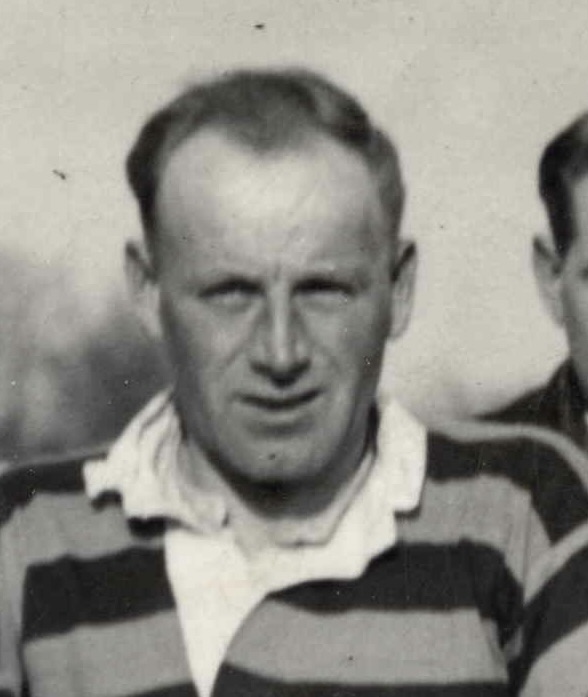
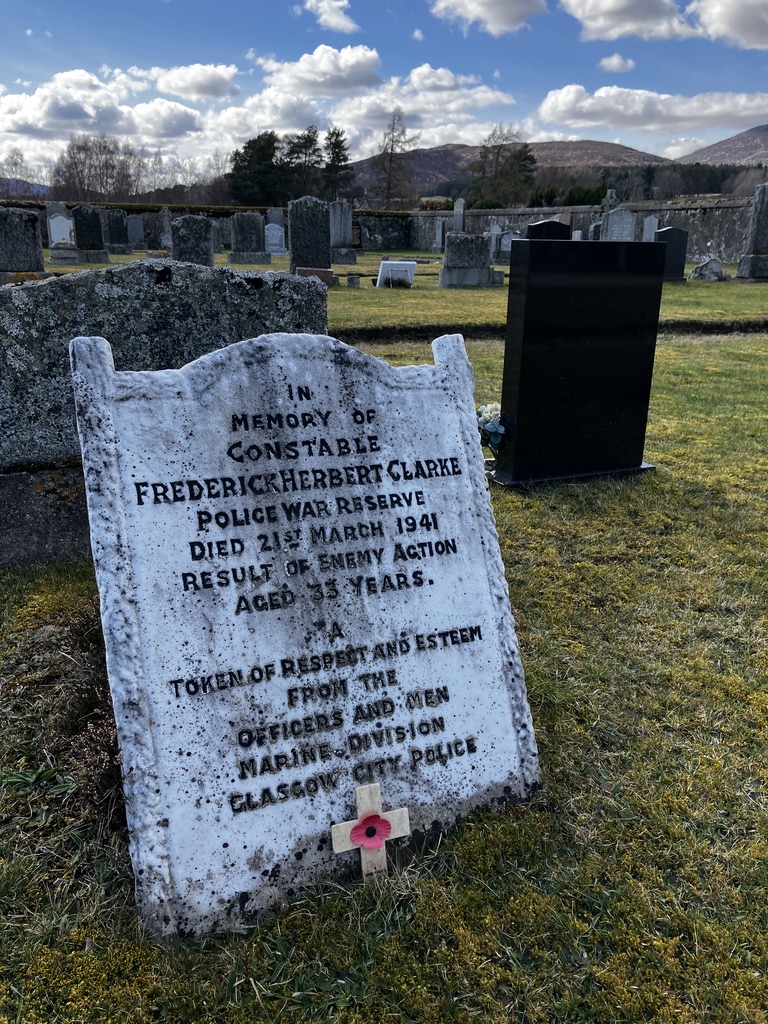
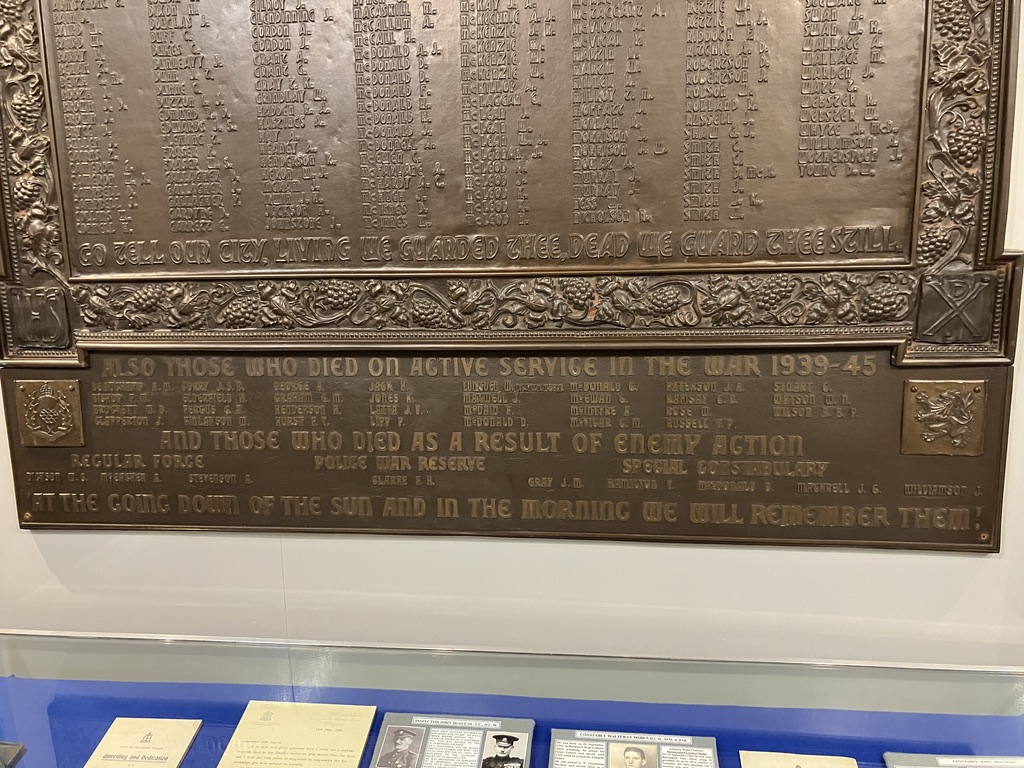
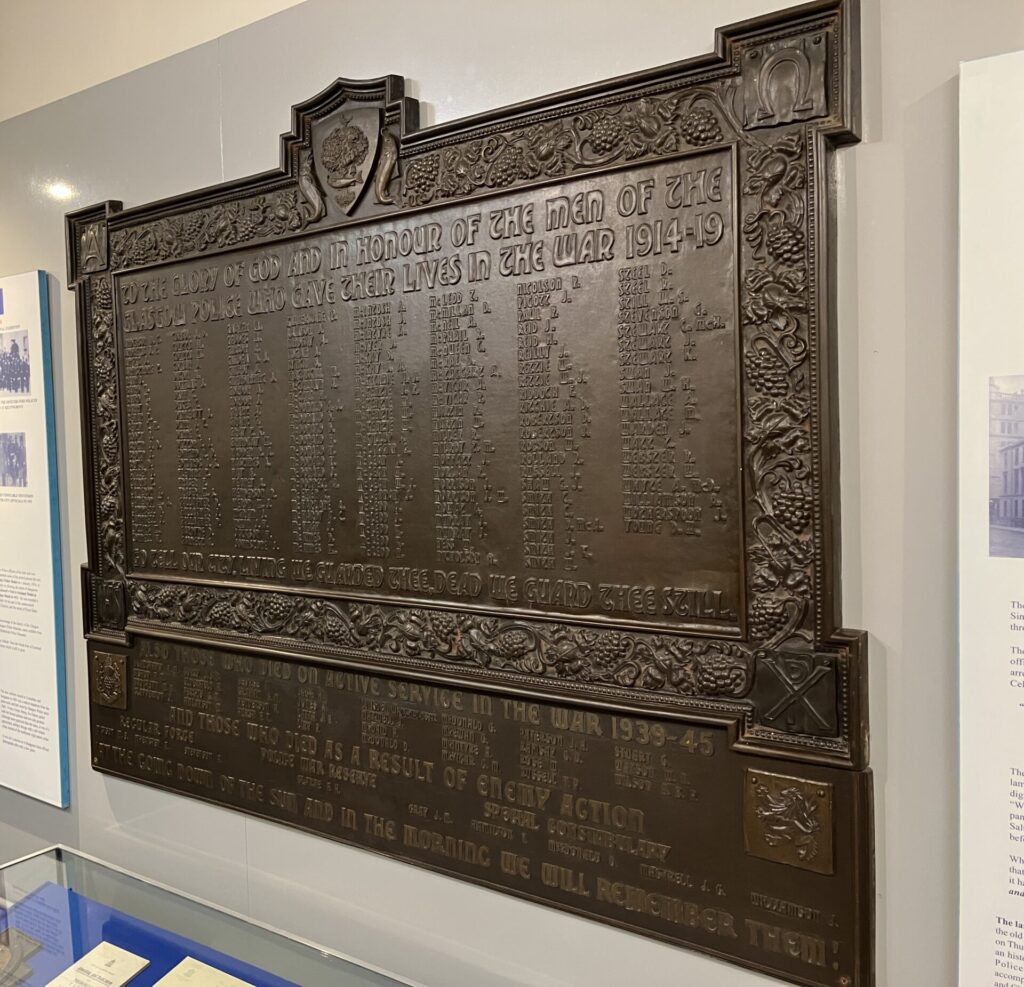
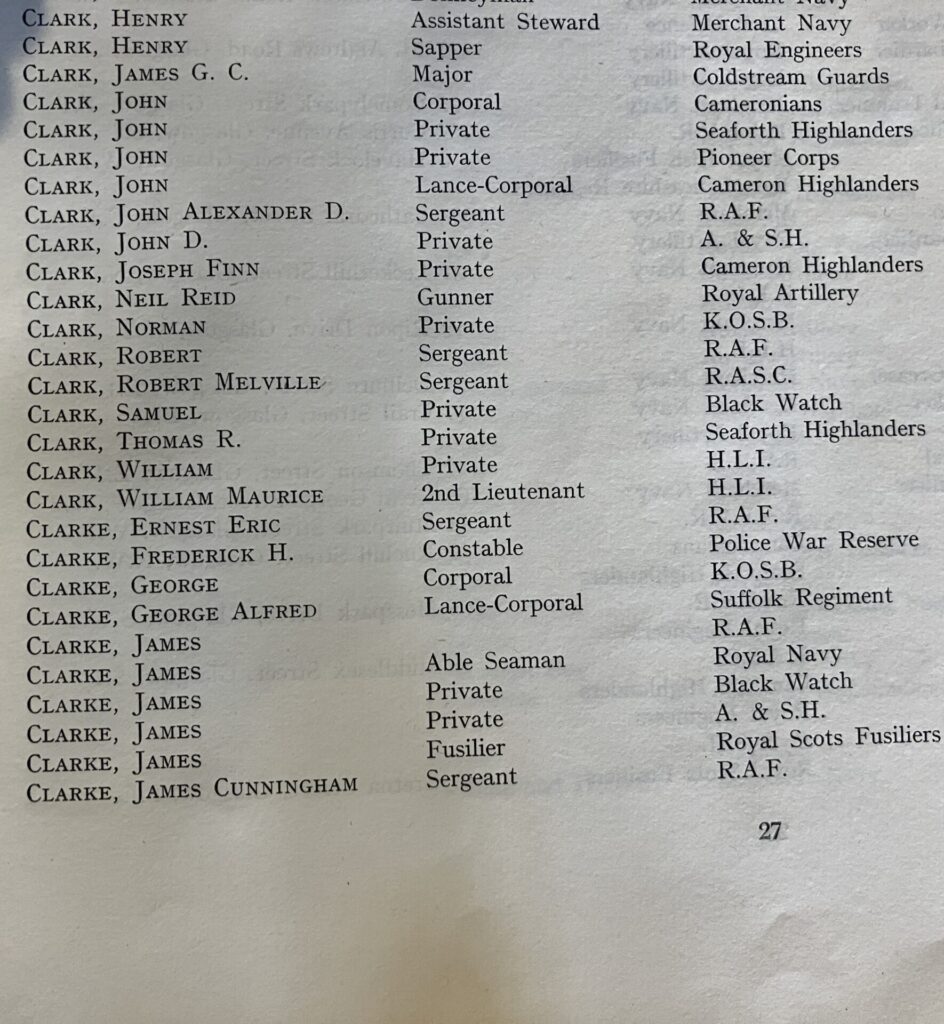
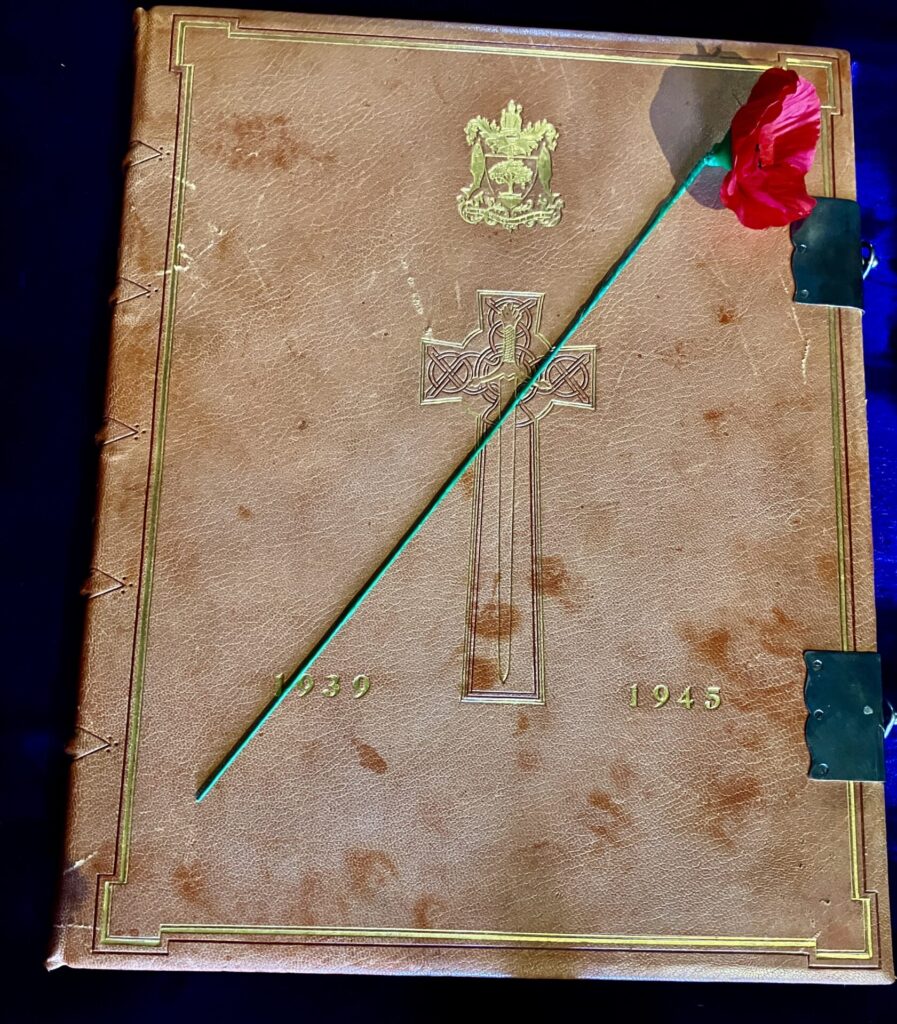
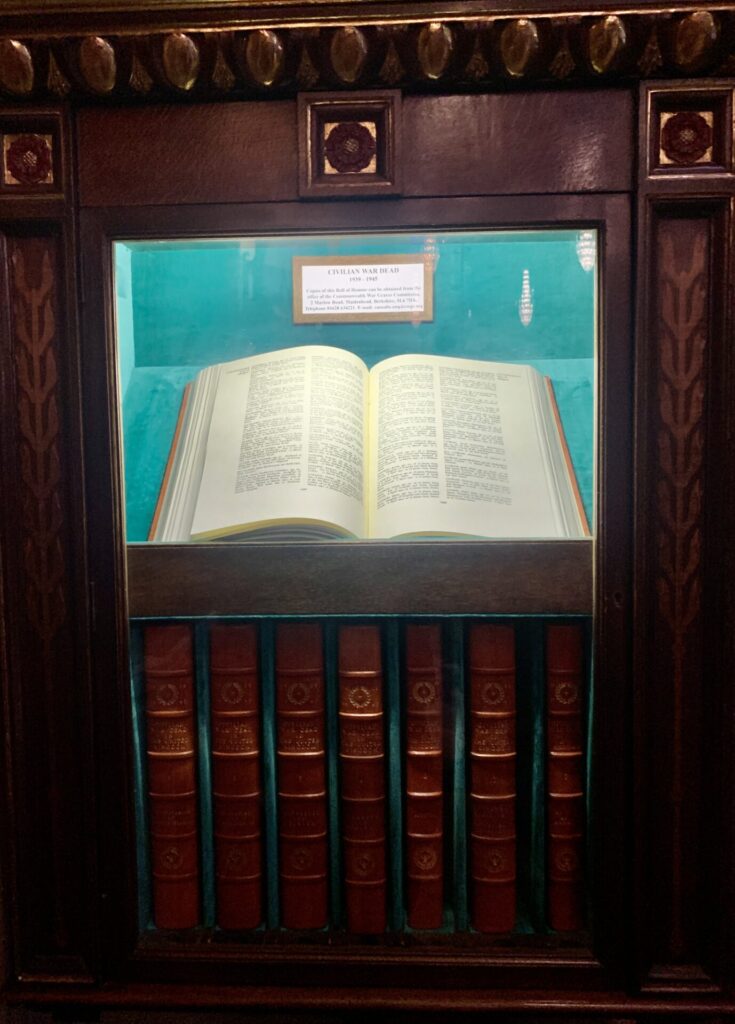
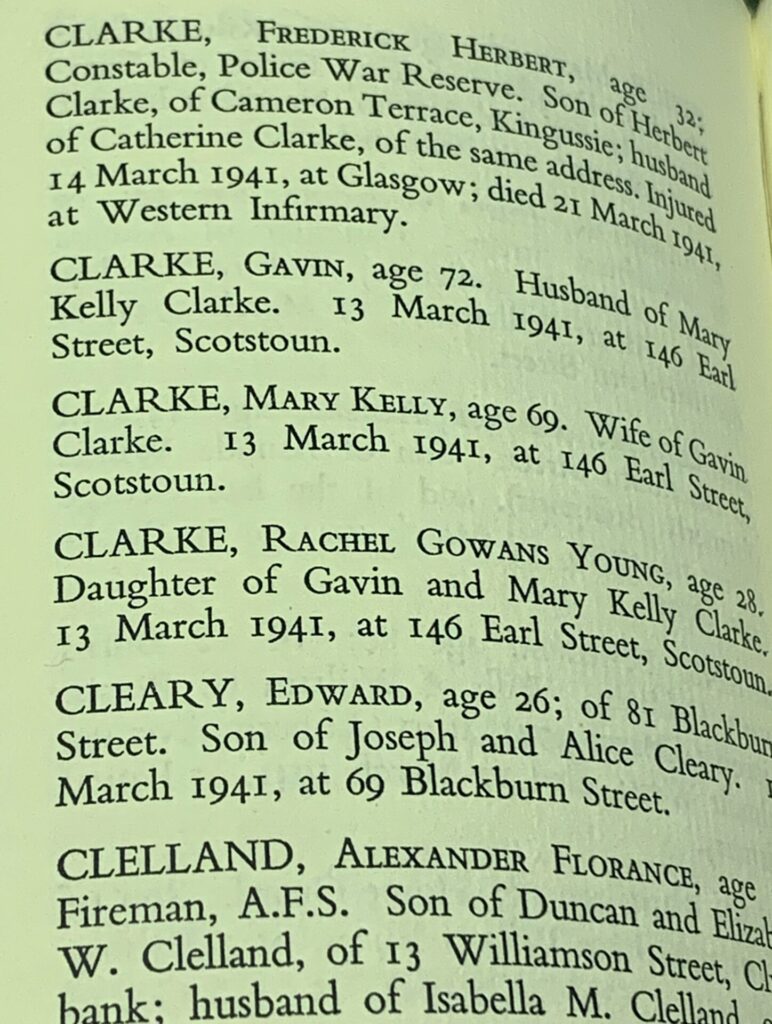
Frederick’s sister, Olive Margaret Balfour (Sybie) Clarke was killed in an accident in Kingussie Railway Goods Yard 17 June 1942 just over a year after the death of her brother Frederick. She was engaged in checking wood at the No 2 loading bank, watching the timber being loaded with her colleague Sven Hansen, when she was trapped between a “motor lorry and a stationary railway wagon.” At the time Sybie was working for Home Grown Timber Department of The Ministry of Supply, as was her father.
She checked the timber supplies from the Newfoundland Overseas Forestry Unit who were based in a camp at Glenbanchor, Newtonmore. The foresters had contributed £35 to Defence Bonds which they presented to Kingussie Secondary School in February 1943 the interest from which to be given as an annual prize for physical education in memory of Sybie. The Sybil Clarke Prize for PE continues to be presented to pupils of Kingussie High School but there is no longer a monetary prize (2023)- see correspondence below. Sybie is buried in Kingussie Cemetery.
